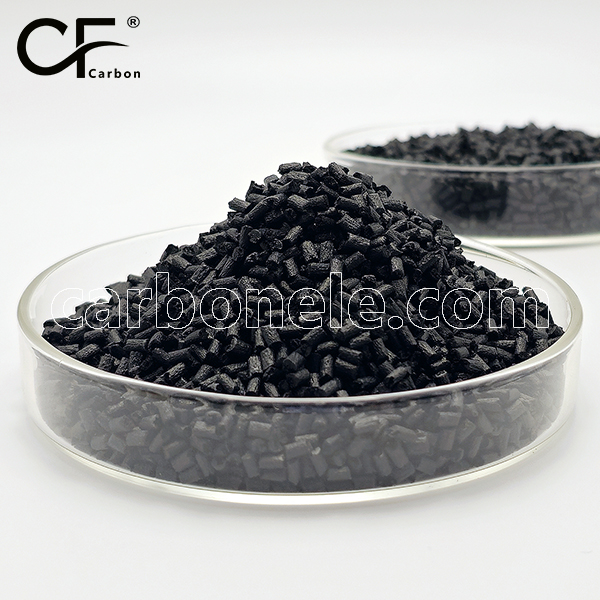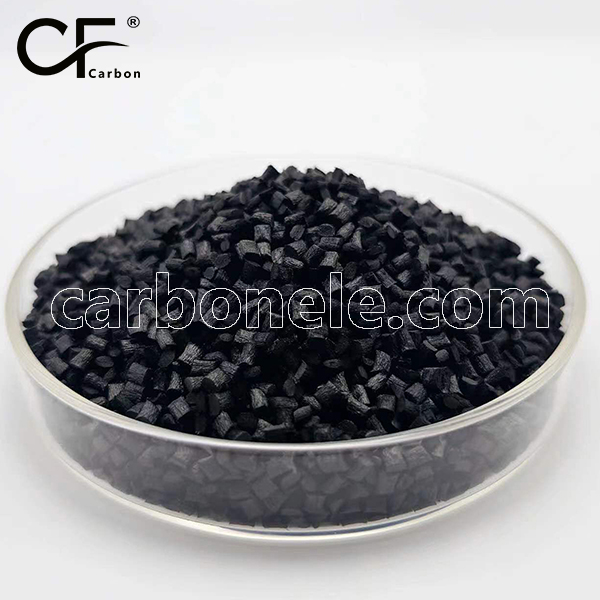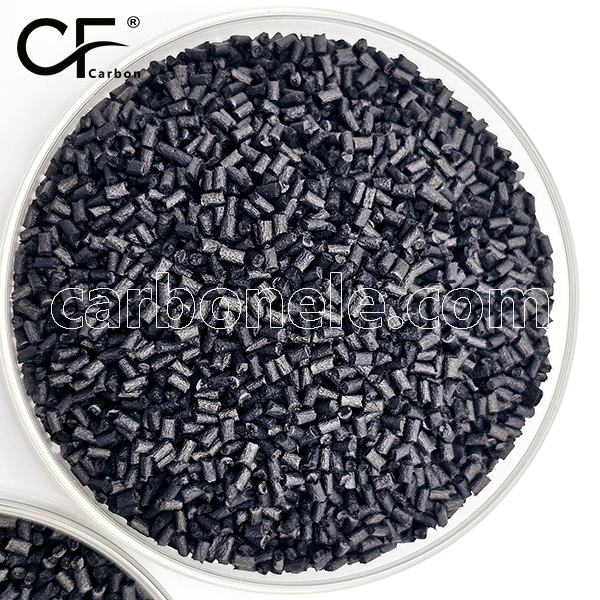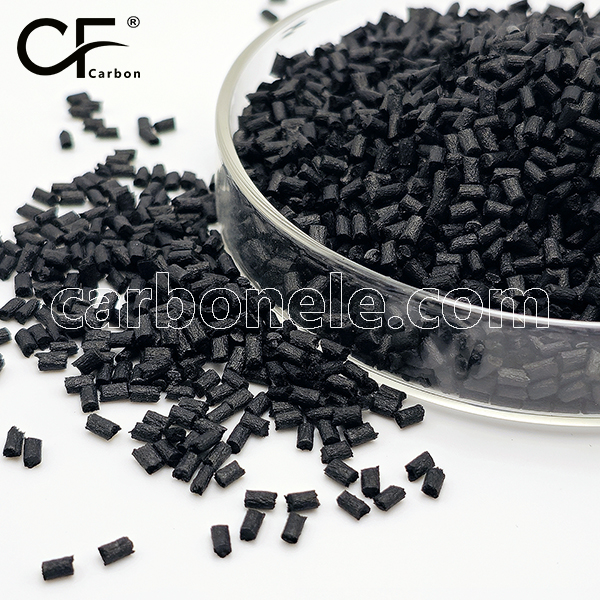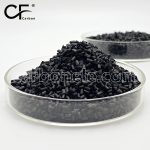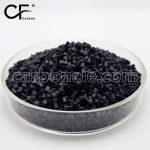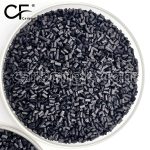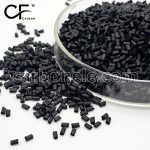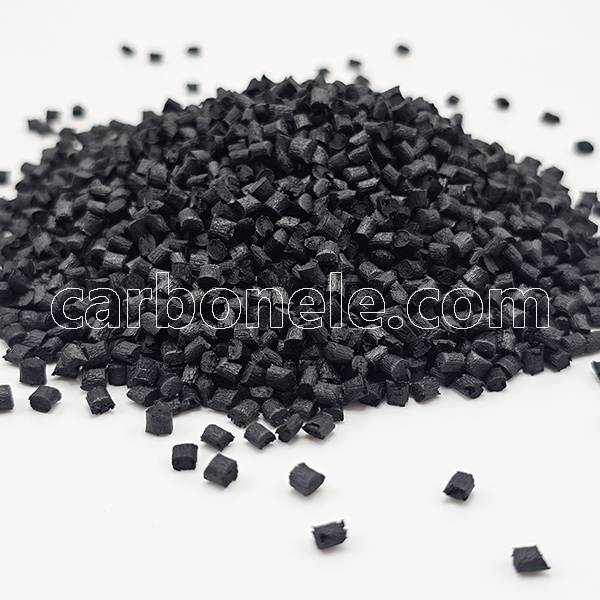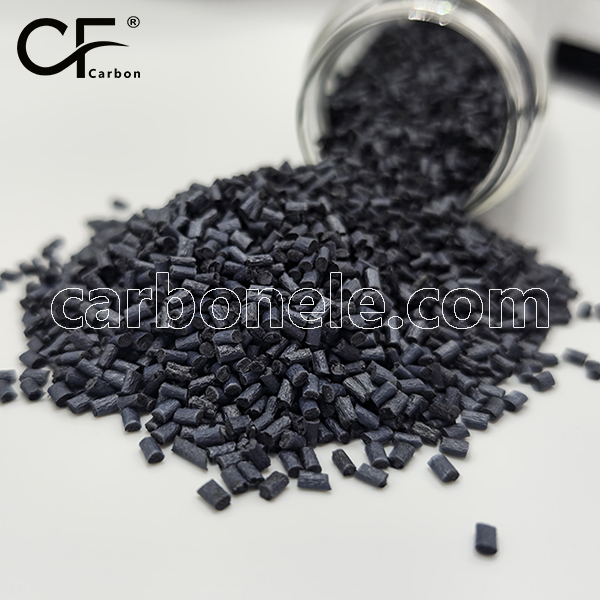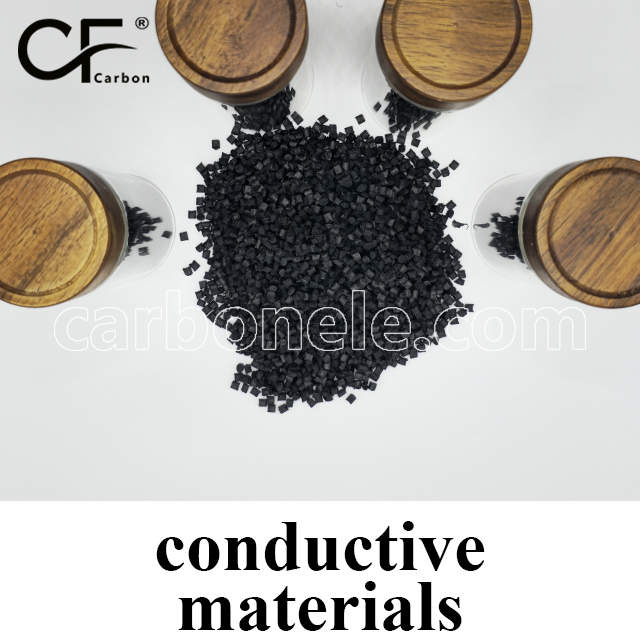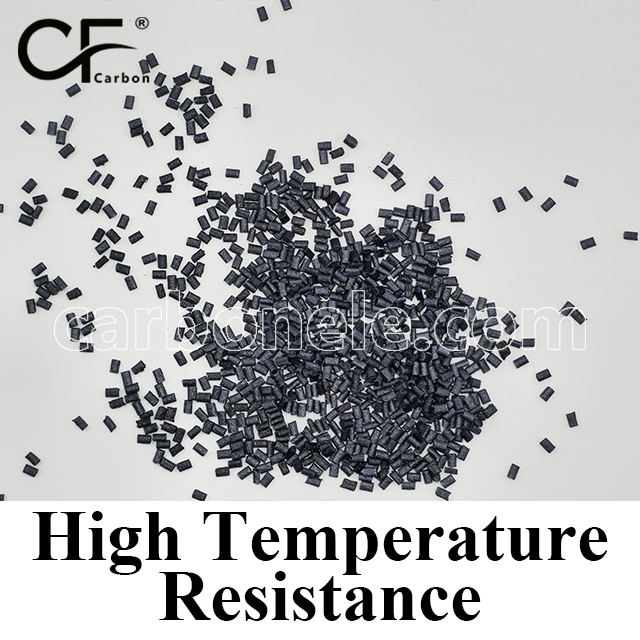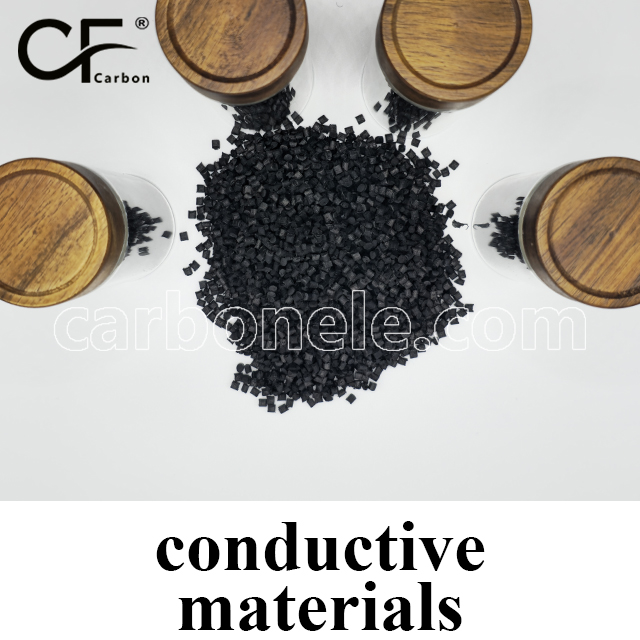
High Stiffness yet Lightweight PA12 CF for Robot Joint Components
PA12 CF combines metal-like stiffness, polymer lightness, and long-term reliability, making it a next-gen material for high-precision, high-cycle robotic joints. Its balanced properties address key challenges in automation: speed, accuracy, and durability.
- Manufacturer: Carbon New Material
- OEM/ODM: Acceptable
- Color: Black
- Free samples: ≤10kg
- MOQ: 100kg
- Port: Xiamen
- Model: PA12-CF-BCA2
- Fillers: SCF
PA12 CF (carbon fiber-reinforced nylon 12) is revolutionizing robotic joint design by offering an optimal balance of structural rigidity and lightweight performance—critical for modern robotics demanding both precision and energy efficiency. Here’s why it stands out:
1. Superior Stiffness-to-Weight Ratio
-
Tensile Modulus: PA12 CF achieves 5–7 GPa (vs. 2–3 GPa for unfilled PA12), nearing aluminum’s stiffness but at 60% lower density (1.2–1.3 g/cm³ vs. 2.7 g/cm³). This enables faster joint actuation and reduced motor load.
-
Specific Strength: With a strength-to-weight ratio 3× higher than steel, it minimizes inertia in high-speed robotic arms (e.g., pick-and-place systems).
2. Enhanced Dynamic Performance
-
Fatigue Resistance: Maintains >90% of initial stiffness after 500,000 load cycles (ISO 527), ensuring longevity in repetitive-motion joints.
-
Damping Properties: Vibration attenuation is 30% better than aluminum, reducing resonance-induced errors in precision tasks (e.g., surgical robots).
3. Environmental Stability
-
Thermal Performance: Operates stably from –40°C to 120°C with a low CTE (3–4 × 10⁻⁵/°C), preventing backlash in temperature-fluctuating environments.
-
Chemical Resistance: Impervious to lubricants and coolants, eliminating corrosion risks in industrial robots.
4. Design and Manufacturing Advantages
-
Complex Geometry: Injection molding allows integrated features (e.g., snap fits, cable channels), cutting part counts by 25% vs. multi-component metal joints.
-
Friction Optimization: Carbon fiber reduces the coefficient of friction (0.1–0.2 vs. 0.5–0.6 for plain PA12), enabling self-lubricating joints.
Real-World Impact
A logistics robot using PA12 CF joints achieved:
-
15% lower energy consumption due to reduced mass.
-
Zero maintenance over 2 years vs. quarterly lubrication for metal equivalents.
Why It’s the Future
PA12 CF bridges the gap between metals and polymers, offering weight savings, corrosion-free operation, and design freedom—key for next-gen collaborative and industrial robots.
Surface Resistivity Comparison
Conductors < 10⁵ Ω/sq. Antistatic Materials 10⁵ ~ 10¹² Ω/sq. Insulators > 10¹² Ω/sq. Static-Dissipative 10⁶ ~ 10¹¹ Ω/sq. *Key Influencing Factors Humidity: Increased moisture can reduce resistivity (e.g., in polymers). Temperature: Affects carrier mobility (↑ heat may lower semiconductor resistivity). Surface Contamination: Dust/oils alter readings significantly. Additives: Carbon black, metallic fillers can lower resistivity. *Applications Electronics: Antistatic materials (10⁶–10⁹ Ω/sq) prevent electrostatic discharge (ESD). Aerospace: Composites must control resistivity to avoid charge buildup. Medical Devices: Insulating materials (>10¹² Ω/sq) ensure patient safety. *Examples Polypropylene (PP): ~10¹⁶ Ω/sq (excellent insulator). Carbon Fiber Composites: 10³–10⁶ Ω/sq (static dissipation). ESD Flooring: 10⁶–10⁹ Ω/sq.
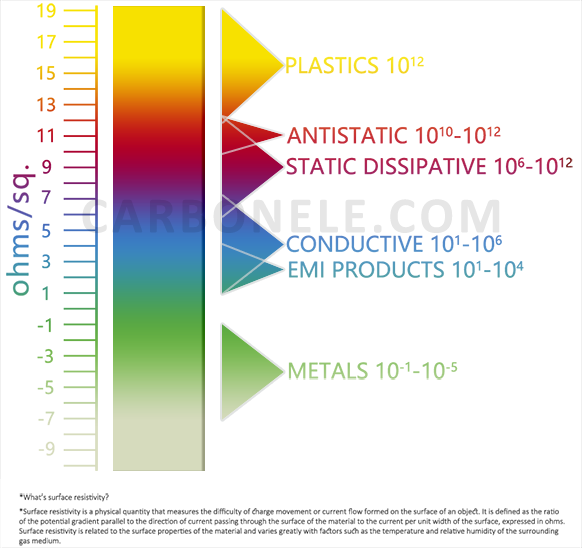
Get to Know Carbon Fibers
The table presents key performance data of carbon fiber grades. T300, with a tensile strength of 3530 MPa and a tensile modulus of 230 GPa, has a relatively low tensile elongation at break of 1.5% and a body density of 1.76 g/cm³. As the grade increases, for example, T700S shows an enhanced tensile strength of 4900 MPa compared to T300, while maintaining the same tensile modulus but with a higher elongation at break of 2.1%. T800S and T1000G both have a tensile modulus of 294 GPa, and their tensile strengths are 5880 MPa and 6370 MPa respectively. T1100G stands out with the highest tensile strength of 7000 MPa and a tensile modulus of 324 GPa. Generally, with the increase in product grade, the tensile strength and modulus tend to rise, while the density remains relatively stable around 1.8 g/cm³.
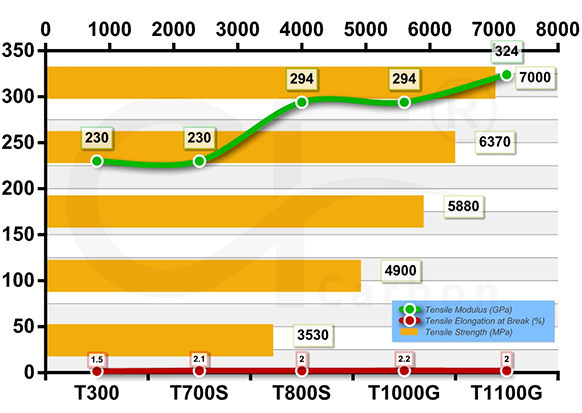
How to Buy?
If you want to obtain information such as product specifications, performance, and price, choose a suitable product according to your own needs. Meanwhile, you can ask the manufacturer to provide samples for testing to ensure that the material meets your usage requirements. If you are interested in purchasing this composite material, please contact the manufacturer Carbon (Xiamen) New Material directly.
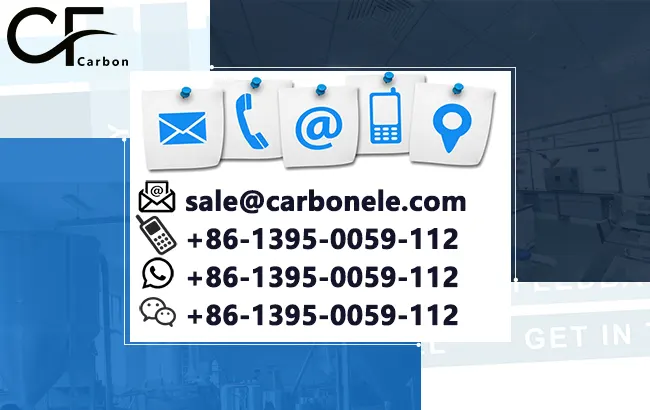
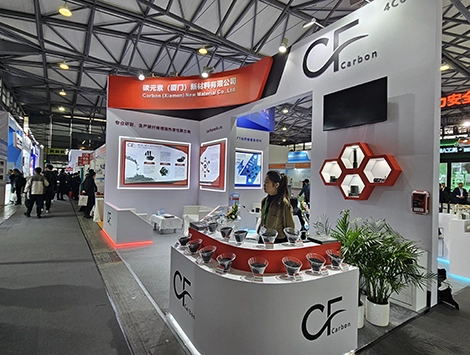

Frequently Asked Questions
Carbon (Xiamen) New Material Co., Ltd. aims to provide buyers with "one-stop" worry-free high-quality services. Here you can find all information about carbon fiber engineering plastics. If you still have questions, please send us an email for consultation!
-
How can I contact the manufacturer of a product that interests me?
When you find a product you are interested in, you can contact the manufacturer directly by sending an email and we will get back to you as soon as possible.
-
How do I find the products that interest me?
All you need to do is enter the keyword, product name in the search window and press the Enter key on your keyboard. Your search results page will then be displayed. You can also search within the product category pages on the home page. Each category is divided into subcategories, allowing you to refine your search and find products that interest you.
-
Where will I find a buying guide?
Please contact our after-sales service directly and we will provide you with a comprehensive operating guide.
-
What are CF Reinforced Thermoplastic Composites?
CF Reinforced Thermoplastic Composites are materials where carbon fibers are incorporated into a thermoplastic matrix. They combine the strength and stiffness of carbon fibers with the processability and recyclability of thermoplastics. For instance, they are used in automotive parts like bumper beams.
-
What are the benefits of CF Reinforced Thermoplastic Composites over traditional composites?
The key benefits include faster production cycles, easier recyclability, and better impact resistance. They also offer design flexibility. An example is in the manufacturing of consumer electronics casings where complex shapes can be achieved more easily.
-
How are CF Reinforced Thermoplastic Composites processed?
Common processing methods include injection molding, extrusion, and compression molding. Injection molding is widely used for mass production. For example, in the production of small components for the medical industry.
-
What industries use CF Reinforced Thermoplastic Composites?
They are utilized in aerospace, automotive, medical, and sports equipment industries. In aerospace, they can be found in interior components. In the medical field, they might be used in prosthetics.
-
How does the carbon fiber content affect the properties of the composites?
Higher carbon fiber content generally leads to increased strength and stiffness but may reduce ductility. A moderate content is often balanced for specific applications. For example, a higher content might be preferred in structural parts of a race car.
-
What are the challenges in using CF Reinforced Thermoplastic Composites?
Challenges include higher material costs, complex processing equipment requirements, and ensuring uniform fiber dispersion. Issues with adhesion between the fibers and the matrix can also arise. An example is in achieving consistent quality in large-scale production.








